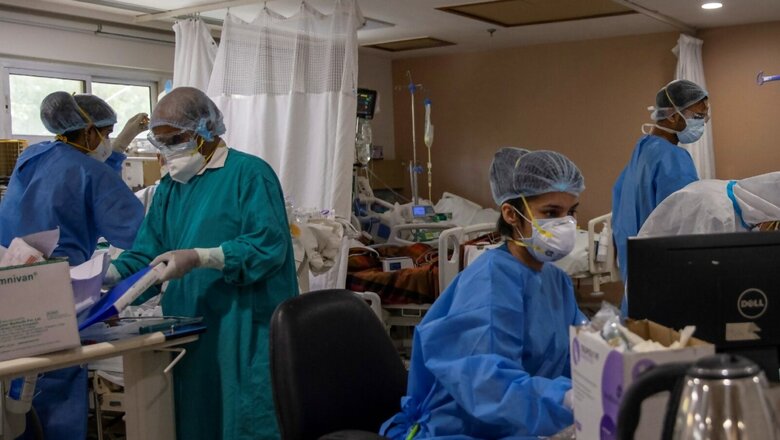
views
The Narendra Modi government plans a big boost for India’s medical devices sector, making its first move by releasing a draft policy exclusively for the industry, which until now has been kept under the policy to regulate pharmaceuticals.
Introducing the atmanirbhar (self-reliance) approach, the government plans to cut import dependence to half in the next 10 years.
According to the approach paper on draft National Medical Devices Policy 2022, released by the department of pharmaceuticals that comes under the ministry of chemicals and fertilisers, “the medical devices sector will be placed on an accelerated growth path” to increase access and affordability of products.
The approach paper, dated March 10, seen by New18.com, has been prepared to seek comments from the public, industry, and medical devices sector by March 25.
“The efforts of the government is to reduce import dependence from 80% to below 30% in next 10 years and ensure self-reliance quotient of 80% in Med-Tech by ensuring Make in India with SMART milestones,” it says.
The draft policy envisages that by 2047, India will be one of the top 5 global manufacturing hubs in terms of value and technology for medical devices.
It also targets that India will be home and originator to 25 high-end futuristic technologies in med-tech.
“India will emerge as champion in critical components, cancer diagnostics, medical imaging, ultrasonic scans, molecular imaging and PCR technologies,” the draft says in its vision document.
India aims to achieve 10-12% of the global market share of the medical devices sector to arrive at a $100-300 billion industry, the draft pegs while adding that the country will have about 50 clusters for faster clinical testing of medical devices to boost product development and innovation.
Top objectives of draft policy
The 38-page National Medical Devices Policy 2022 lays down a clear roadmap for accelerated growth of the sector.
The policy advocates to reach the masses and provide equity and universality in the absence of physical infrastructure through automation and providing virtual presence.
Apart from access, the policy aims to improve clinical outcomes through early diagnosis of diseases and increased accuracy in treatment to reduce the lifetime cost of disease burden.
It also emphasises facilitating research and development and innovation with a focus on enhanced collaboration, global partnerships, and joint ventures to bridge the gap between academic curriculum and industry requirements.
The plan is to ensure human resource development and introduce relevant curriculum at higher education level for enabling the clinician-engineering partnership along with skilling of various stakeholders comprising doctors, technicians, service engineers with a focus on the creation of high-end jobs with in-demand skill sets across the innovation value chain.
The government, as per the draft policy, will be involved in the “awareness creation and brand positioning with a focus on proactive communication”.
The awareness will be created by the government on the sector in key domestic and global forums, positioning India as a hub for manufacturing medical devices as part of the “Make in India, Make for the World” initiative.
Present scenario
According to the policy draft, the current market size of the medical devices sector in India is estimated to be $11 bn and its share in the global market is around 1.5%. “The medical devices sector in India is still at a nascent stage,” it says.
Recently, the Indian medical devices sector’s contribution has become even more prominent as the country supported the global battle against the Covid-19 pandemic through the production of medical devices and diagnostic equipment such as ventilators, RT-PCR kits, IR thermometers, PPE kits, and N-95 masks.
Read all the Latest News India and Breaking News here




















Comments
0 comment